- Home
- Simon Winchester
Krakatoa: The Day the World Exploded Page 6
Krakatoa: The Day the World Exploded Read online
Page 6
– from the introduction to Tectonic Evolution of Southeast Asia, R. Hall and D. J. Blundell (eds.), London, 1996
1.Delineation
On a bleak December evening shortly before Christmas in 1857, in the severely elegant lecture theatre of what was then biology's sanctum sanctorum, the Linnean Society in Burlington House on London's Piccadilly, a young man named Philip Lutley Sclater rose to present a paper that, though all but overlooked by most biologists today, was to lead steadily to a revolution in scientific thinking about the history of the world.
Philip Sclater may have been only twenty-eight years old when he stood before the assembled worthies, but already he had won an awesome reputation. He had been to Winchester and Christ Church, Oxford, and was inordinately clever. He was unusually well travelled (Argentina, Malaysia, India, Australia and most of the states of America), and was both a superb artist and – the basis of his near-legendary reputation among his few followers today – a brilliant ornithologist.
He specialized in the exotic, the colourful, the tropical, the odd. He came to know all there was to know about the South American finch-like birds called tanagers and the country neighbours of theirs that were called ovenbirds, because they built their nests out of clay in the shape of ovens. He would write definitive books about Passeriformes, that huge class of rather less unusual perching birds; he had a lark named after him; he founded the British Ornithologists' Club and was for many years secretary of the Zoological Society of London. And he gave the name Lemuria* to a landmass he believed (wrongly) had in Eocene times connected the Malayan peninsula with Madagascar, and on the remaining peaks of which now sits the enormous mid-Indian Ocean, British-owned and American-leased military base of Diego Garcia.
Crucially for this Krakatoa story, Philip Sclater was also a specialist in a new science that was growing apace during late Victorian times, and that has been called variously either biogeography or zoogeography. As more and more specimens of animals, insects, plants and birds were collected, classified and catalogued, so it became steadily more apparent that geography had a major influence on zoology and botany – that certain living creatures were peculiar to certain parts of the world and not merely to certain climatic zones. One might find precisely the same climate in Uganda and Queensland, for example, but because Africa and Australia were so far away from each other, their native inhabitants had developed without ever making contact with one another. In the same way their flora and fauna were now entirely separate, different and peculiar to each of the two places. The polar populations are another obvious example of zoogeographical reality: polar bears and people inhabit the north, penguins and albatrosses the south, even though the climatic environment in each place is essentially identical.
The birth of the study of such regional differences in populations of plants and animals – of the biota, to use the proper if rather unattractive word – was a natural by-product of the frenetic pace of exploration of the time; and Dr Sclater, an explorer of the old school, had by the middle of the nineteenth century a keenly developed interest and expertise in the topic.
The paper he presented to the Linneans that winter's night was on precisely this subject: ‘On the General Geographical Distribution of the Members of the Class Aves’, with a particular interest ‘in the islands around New Guinea’. And Sclater offered what to his listeners was a remarkable and startling discovery. He had observed what seemed to be a rigid zoogeographical distinction deep within the islands of the East Indies.
The kind of dramatic geographical variation that might be seen on the two sides of a vast body of water – the measure of difference between African birds and Brazilian birds, for example, separated by the whole of the South Atlantic – might not be expected within the continuum of an archipelago as closely knit as the East Indies. But here, astonishingly, there was. In months of research that took him right along the 2,000-mile volcanic chain stretching from Sumatra to the Trobriand Islands, Sclater found the occurrence of a huge, unanticipated and very sudden change: the jungles in the west of the archipelago, for example, sported birds that were akin to those found in India, while those to the east of a vaguely imagined line were alive with an avian fauna that was to be found only in Australia.
Sclater had not completed enough research to be able to draw a firm demarcation line between the two populations. All he could say for certain was what he had seen. Certain birds – say, parrots – found in wild abundance in the eastern, Australian end of the archipelago were, quite literally, rarae aves on the western, Indian side. There are barely any parrots on Java; but there is every imaginable kind in Sulawesi, Irian and Timor. Not a single cockatoo is to be found in the west; but two entire families each of cockatoos and lories – this last a kind of parrot with a brush-like tongue – are found in the east.
Barely any thrushes are to be found on the islands to the east of Bali. In the western half of the archipelago there are woodpeckers, barbets, trogons, paradise flycatchers and paradise shrikes, minivets, blue drongoes, pheasants and jungle fowl – but none of these, just like the humble thrush, is to be found in the east. The forests of this eastern end of the chain, on the other hand, are populated uniquely with legions of showy and exotic birds that one might just as easily find in Queensland and New South Wales: honey-suckers and birds of paradise, cassowaries and emus.
Any traveller with half an eye and half an ear open will realize simply from the colours and the birdsong that something profound is going on. In making an eastward journey from Sumatra to Irian, though he may not once pass out of sight of land, the traveller will have most decidedly left one world and entered another one utterly different.
Alfred Russel Wallace.
It would be forty more years before Sclater, working then with his son, would draw a map with the formal delineation, as the pair saw it, that separated the two avian worlds. But his work, which culminated in the reading of his 1857 paper outlining but not quite delineating their meeting-place, excited the interest of a much older, bolder and less well-educated Briton who was then living in the Indies. It was Alfred Russel Wallace who came swiftly to understand that it was not simply birds who inhabited two quite different worlds: plants and animals did also. And, just like the birds, they all met – collided, even – somewhere among the maze of jungles of the myriad islands of the Dutch East Indies.
Alfred Russel Wallace – who at the time was collecting, studying and living on the spice-rich island of Ternate in a grass hut – would take the observations of this young naturalist and, adding a vast amount of information from his own observations and collections, transform them into a theory and a grand cartographic creation that would survive to this very day. It has a name that remains its architect's most familiar memorial: the Wallace Line.
Philip Lutley Sclater, learned, patrician and well connected, might have thought he had some vague right to have this 2,000 miles of tracery named after him, in recognition of his pioneering work on the region's bird-geography. But the honour was eventually to be given to his very much more capable successor, the lowly born, hugely tall genius from the town of Usk in south Wales, remembered today mainly for having imagined and then drawn this vast and invisible line in the sea. Mainly, but not solely: Alfred Russel* Wallace has a trench off Java named after him too, as well as a 13,300-foot peak in the Sierra Nevada, a garden in Wales, an aviary in Bristol, a bird of paradise, biology prizes in both Kansas and Australia, countless lecture theatres and university halls, and craters on both Mars and the Moon.
Whoever named a lunar crater in his honour was a man with a mordant wit, or an ear for the laboured pun. For many years Wallace had been known, perhaps more widely than anything else, as Darwin's Moon† – the lesser body that was bound by the Fates to dance in constant attendance around the orbit of the greater. For although the Wallace Line has yet some importance, and though it has a singular connection to this story of Krakatoa, any account of Wallace himself must make mention of the more important reason
s for such fame as he still has – and that is that Alfred Russel Wallace, alongside Charles Darwin but always as his satellite, is the other true but largely unremembered pioneer of the science of evolution.
His birth in Usk in 1823, as the seventh child of a librarian, was into a threadbare but intellectually respectable family. He started his own life as a Leicestershire schoolteacher, but one whose life was marked from the start by passionate fascinations – in this first case, with the life and times of the Coleoptera, those insects with hard coverings for their flight wings that are generally and more prosaically known as beetles. He was also interested in spiritualism, and indeed rediscovered this fascination much later in his life; mercifully for the advance of science, his dabblings into what he called ‘phreno-mesmerism’ were suddenly nudged back towards worthier pursuits when he stumbled upon a similarly insect-captivated city lad, a hosier's son and sometime warehouse-sweeper named Henry Walter Bates.
This pair, soon inseparable, hunted, collected and catalogued beetles in every corner of Leicestershire and points beyond – with Bates publishing his first paper ‘On Coleopterous Insects Frequenting Damp Places’, the title telling us perhaps more about Leicestershire than about beetles.
In 1848, three years after meeting and having exhausted the coleopterous delights of the meadows and damp places of the Midlands, this pair of redoubtable young men combined what little savings they had to begin a remarkable scheme: to go off specimen collecting in the wilds of the beetle-rich, insect-rich Amazon rain forest.
For Bates it was the beginning of a lifelong love affair with what he called ‘the one uniform, lofty, impervious and humid forest’, a love affair that started in the remote Brazilian jungle village of Ega, 1,400 miles upriver. During the six years he lived there he collected and named no fewer than 550 new and distinct species of butterfly (at the time only sixty-six were known throughout the entire British Isles). He travelled thousands of miles in the deepest and most remote corners of the forest, and over the years became a world authority on insect mimicry; and, together with his friend Wallace, ultimately came to be an instigator of the theory of natural selection and an unalloyed supporter of Charles Darwin once On the Origin of Species had been published in 1859.
For Wallace, however, the journey to Amazonia was just the start of a fascination that soon ranged around the entire world, but that is most closely associated today with the region he found the richest and most intellectually satisfying: the then Dutch East Indies. Yet his interest did not properly begin until he had been severely tried and tested on his way home from Brazil: the square-rigger Helen, in which he was bringing home his valuable collections of Amazon specimens, caught fire and sank in mid Atlantic, and Wallace spent ten days in a longboat before being picked up near Bermuda. He wrote two books on his experiences. Darwin, who trawled through both looking for evidence to bolster his own fast-coalescing ideas on biological variation, natural selection and species origin, found them frustrating. ‘Not enough facts,’ he harrumphed, cruelly unaware that Wallace had lost not only his notes but his specimens, all gone down with the foundered ship.
In 1854 Wallace set off, alone, for the East Indies – the chain of islands that he, as a geographer, preferred to call the Malay Archipelago, since the thousands of islands were indeed a classic example of an archipelago, and the islands' lingua franca was, in most cases, and to a greater or lesser degree, based on Malay. His keen conviction remained, for all the eight years that he spent there, that evidence to be found in this archipelago would substantiate his two growing beliefs: that geography was highly influential in the development of biology, and that species originated by the natural selection of favoured types from within the variations of any population. He spent the better part of his life seeking to prove both points – and by and large (and in the penumbra of Charles Darwin) he succeeded magnificently.
His collecting zeal was prodigious. He sent back to London, or eventually came back with, a meticulously organized collection of no fewer than 125,660 specimens of the plants, animals, insects and birds of the islands. There were 310 mammals, a hundred reptiles, 83,000 beetles (not surprisingly), 13,000 other insects, 8,000 birds, 13,000 butterflies and 7,500 shells. His study of this vast number of living things brought him to both of the epiphanies that he had sought, and at almost the same moment. He suddenly realized evolution's existence and mechanism, and he immediately recognized the profound difference between the two basic animal and plant populations of his chosen archipelago, and he realized and recognized these two profundities at essentially the same time: during what for Wallace were the seminal and intellectually furious years of 1858 and 1859.
Wallace's sudden understanding of evolution is one of the most romantic tales of modern science, ranking with the sudden achievements of Archimedes and Galileo, Becquerel and Newton, Fleming and Marie Curie. The vision came to him not in a bathtub, or in Pisa, or on a Paddington windowsill, or under an English apple tree – but in a grass hut on stilts, in a village on the island of Ternate, during a bout of jungle fever. There are not a few who believe that it is the Spice Islands, and not the Galapagos, that one day should come to be recognized as the true birthplace of the science of evolution.
At the time, thousands of miles away in Kent, Charles Darwin was working, with painstaking tardiness, on what he called his ‘big book’. He knew he was on to something. He had the core of an idea as to how and why new species evolved. He had the facts at hand. He had collected his own beetles; he had bred pigeons; he had observed and measured and catalogued the tens of thousands of living creatures from his years aboard HMS Beagle. And he was well aware of Alfred Russel Wallace – not least because in 1855 Wallace, then in Sarawak, wrote a paper entitled ‘On the Law which has Regulated the Introduction of New Species’, which argued that new species arise from within variations in a population that is somehow (as he was so often seeing in the East Indies) geographically isolated from other populations of the same creatures. The paper presented only an incomplete theory,
Charles Darwin.
and it presented no mechanism for this introduction of new species – but it set Darwin once again to pondering, ruminating and (for which he is well known) procrastinating.
And then, just after New Year's Day in 1858, Wallace arrived in those eastern islands that the Dutch called the Moluccas (or Maluku, as they are once again today). During the intervening three years of wanderings between Sumatra and Irian he had had his full share of excitements: headhunters had severely scared him on the island of Lombok, his arms and legs had been badly infected by leeches and biting insects, he had found a ten-foot snake in the ceiling of his hut on Ambon, he had suffered from unremitting dysenteric fever, and he had contracted case after case of malaria. Indeed, it was a particularly nasty attack of this, caught when he was on a brief insect-collecting trip to Halmahera, that prompted him to go back to his little house on Ternate at the end of February. He sat and perspired and wrote and pondered and ruminated – and then, in one of those fascinating manic moments of fever-induced excitability, he suddenly got it.
While wondering yet again what it might be that caused the break between one species and the success of a specialized variety that would lead to the creation of a wholly new species there suddenly flashed upon me the idea of the survival of the fittest – that the individuals removed by these checks must be, on the whole, inferior to those that survived. Then, considering the variations continually occurring in every fresh generation of animals or plants, and the changes of climate, of food, of enemies always in progress, the whole method of specific modification became clear to me, and in the two hours of my fit I had thought the main points of the theory. [My italics.]
Wallace wrote this account in his book The Wonderful Century a long while later, which might prompt some suspicions. But any doubts about the legitimacy of his claim to be the first to recognize both the idea and the mechanism of evolution must be allayed by his having immediately written a paper a
nd dashed off a letter to Down House – asking Darwin to forward it for possible publication to the geologist Charles Lyell, whom Wallace thought he had better impress. It was Darwin who was impressed. The Wallace paper was, he later said, ‘a bolt from the blue’. It deeply disturbed him. It was the very idea for which he was looking. It provided the jolt he needed to get on and finish his big book. And when he did, and the book appeared under the now-famous title On the Origin of Species, Wallace's crucial references to ‘the struggle for existence' and the ‘survival of the fittest' appear as the keys to the entire mystery.
Charles Lyell and Joseph Hooker persuaded Darwin to share at least some of the glory with Wallace, far away, low born and an upstart though he may have been. The formal announcement that the puzzle at the root of the science of evolution had now. been cracked was made at the meeting of the Linnean Society on 1 July 1858: it was a joint announcement, made by the introduction of papers by Darwin and Wallace – with Darwin admitting, somewhat lamely, that though he had had the very same idea as Wallace some days before, he had never committed it to paper. Procrastination had done for him.
But not, it seems, for his reputation. Darwinism is the accepted word, invented by Wallace and the title of one of his later books. Wallace never displayed in public a scintilla of bitterness, and contentedly and generously gave Darwin all the credit. His classic, The Malay Archipelago (in which Wallace tried to popularize the idea of a zoogeographical division, which so neatly coincides with the phenomenon that gives birth to Krakatoa), is dedicated to Darwin, ‘to express my deep admiration for his genius and his work’. He remained loyal, almost servile – the ever revolving little moon around Darwin's glittering and far grander planet.
He did not receive a knighthood, as did so many of his more nobly born contemporaries, like Galton, Huxley, Lyell and Hooker. He did, however, become a member of the Order of Merit, which many in Britain think more worthy. His public standing then went into a long and slow decline, and outside Indonesia, where he is still well known, he has until lately been little recognized in the world.

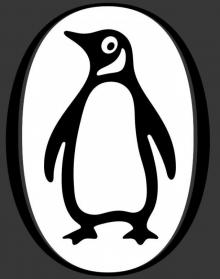 The Surgeon of Crowthorne
The Surgeon of Crowthorne Korea: A Walk Through the Land of Miracles
Korea: A Walk Through the Land of Miracles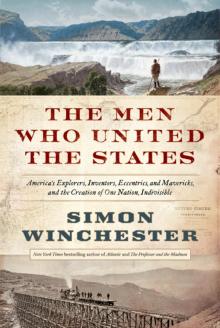 The Men Who United the States: America's Explorers
The Men Who United the States: America's Explorers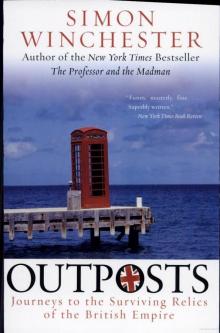 Outposts: Journeys to the Surviving Relics of the British Empire
Outposts: Journeys to the Surviving Relics of the British Empire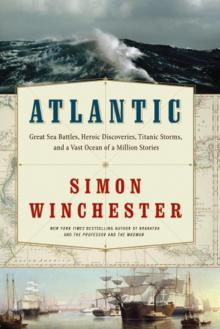 Atlantic: Great Sea Battles, Heroic Discoveries, Titanic Storms
Atlantic: Great Sea Battles, Heroic Discoveries, Titanic Storms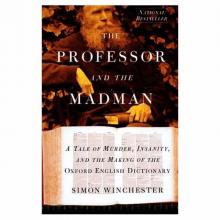 The Professor and the Madman: A Tale of Murder, Insanity
The Professor and the Madman: A Tale of Murder, Insanity A Crack in the Edge of the World
A Crack in the Edge of the World The Perfectionists: How Precision Engineers Created the Modern World
The Perfectionists: How Precision Engineers Created the Modern World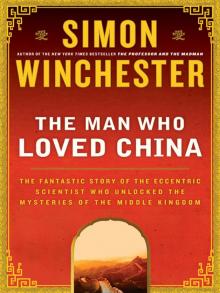 The Man Who Loved China: The Fantastic Story of the Eccentric Scientist
The Man Who Loved China: The Fantastic Story of the Eccentric Scientist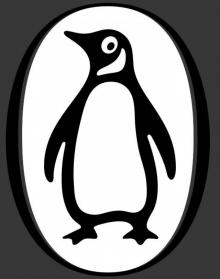 The River at the Center of the World: A Journey Up the Yangtze
The River at the Center of the World: A Journey Up the Yangtze The Fracture Zone: My Return to the Balkans
The Fracture Zone: My Return to the Balkans The Map That Changed the World
The Map That Changed the World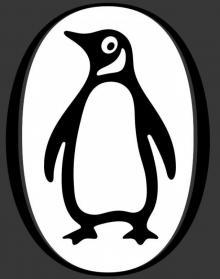 Krakatoa: The Day the World Exploded
Krakatoa: The Day the World Exploded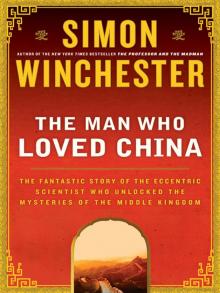 The Man Who Loved China
The Man Who Loved China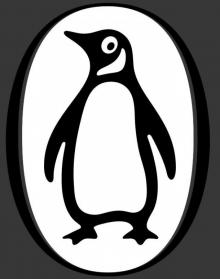 The River at the Centre of the World
The River at the Centre of the World Bomb, Book and Compass
Bomb, Book and Compass The Perfectionists
The Perfectionists The Meaning of Everything
The Meaning of Everything Exactly
Exactly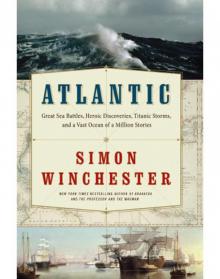 Atlantic
Atlantic Korea
Korea The Fracture Zone
The Fracture Zone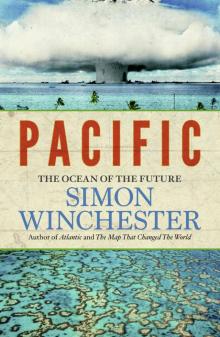 Pacific
Pacific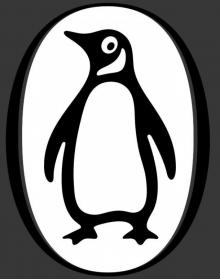 Krakatoa
Krakatoa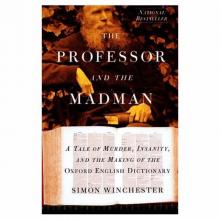 The Professor and the Madman
The Professor and the Madman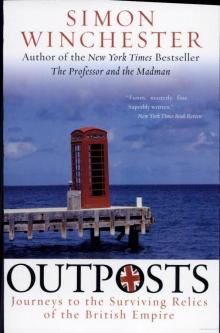 Outposts
Outposts